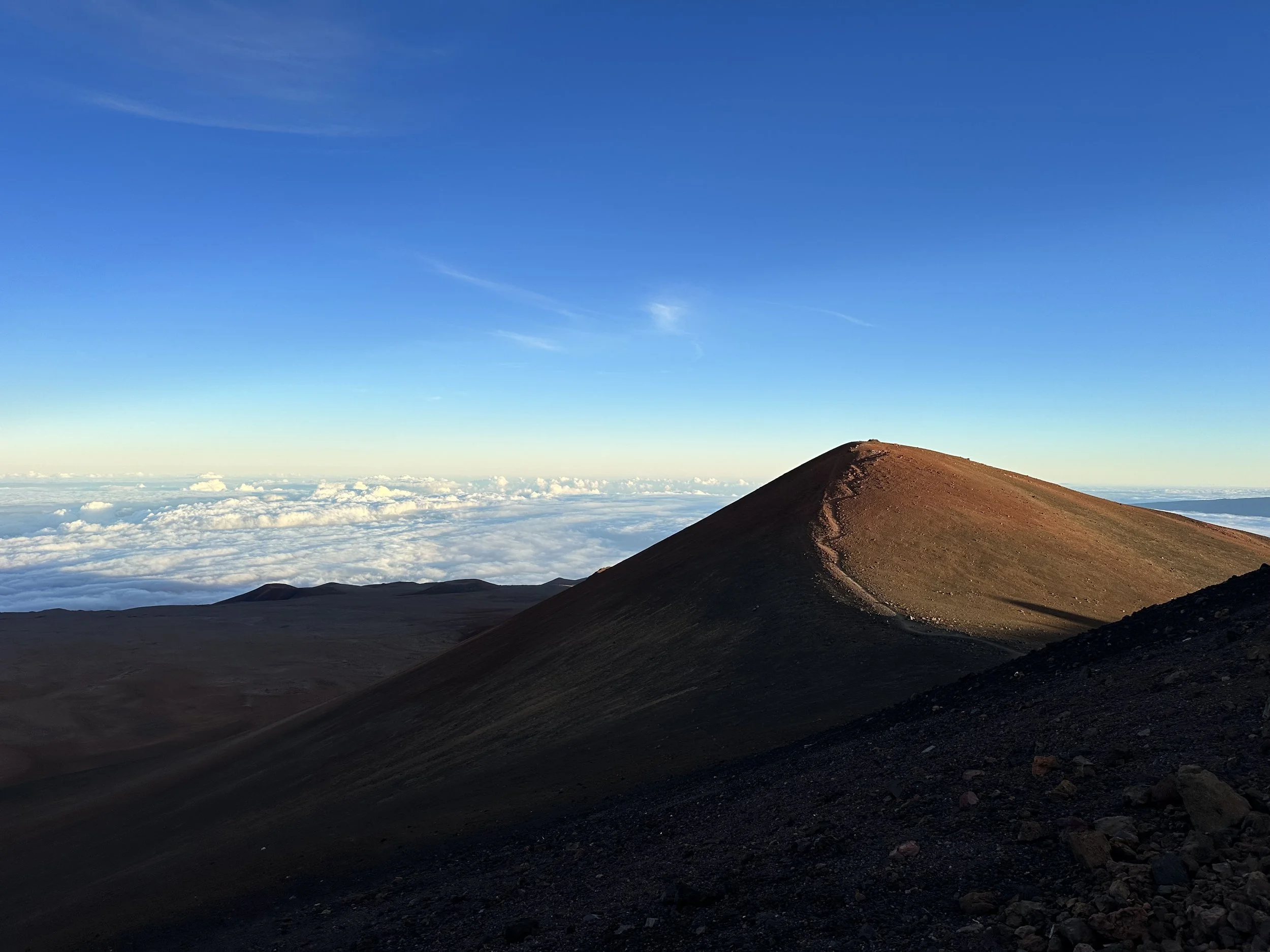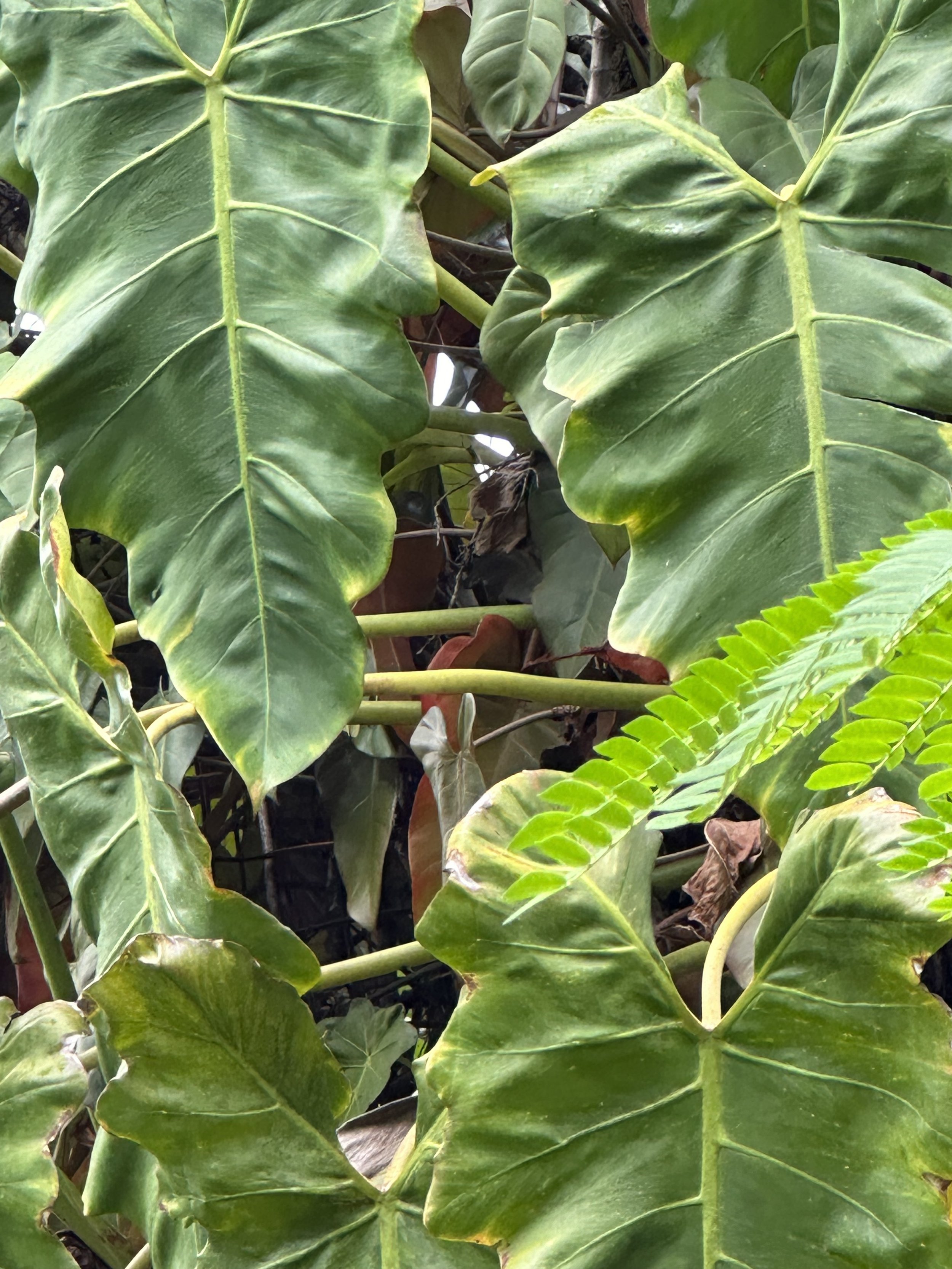Day 12 - Stars
This morning we had breakfast at the beach shack and then went snorkelling. It was Phil’s first time snorkelling since the Maldives, so we took it slow and just went around the rock in the middle of the bay a couple of times and checked out the fish. It was pretty abundant for a shallow sandy bottomed, beach cove.
At lunchtime we drove to the meet point to meet our guide Jeff from Hawaii Forest and Trail. The meet point is at a shopping centre so we grabbed a quick chicken Caesar wrap and some car snacks. The tour to the summit of Mauna Kea (including dinner and star gazing) takes about 7 1/2 hours. We started off driving up the mountain through pasture land occupied by wild goats and sheep (both invasive species introduced by Captain Cook). On the way Jeff gave us lots of information about the landscape around us, the creation of the cinder cones and the lava fields. It took about two hours to get up to the visitors centre where we stopped for a very early dinner of chicken stew and to acclimatise to the elevation). Then we travelled up an unsealed road for a further 45 minutes to reach the summit at 4,200m (13,796 feet), visiting the Very Long Baseline Array on route (it’s was so cool and it MOVED whilst we were there).
At the summit we saw all the observatories. The location is ideal because there is no light pollution, low humidity (it’s zero degrees up there) and it’s above the clouds so there is no water vapour in the atmosphere. We watched the sunset and walked around the observatories and the sub-millimetre array taking pictures. I got very excited when the United Kingdom’s Infrared Telescope (UKIRT) opened up. The Japanese one, called the Subaru telescope, is also pretty neat because it’s not dome shaped like the others. It was so fun up there. I could have stayed and admired the telescopes for hours.
Once the sun set the rangers come to get the tourists off the mountain, so we descended 1,000ft to a small carpark where Jeff set up the two telescopes and we all had hot chocolate and cookies. Jeff then guided us around the night sky telling us the Hawaiian names for all the constellations. Scorpio is known as Maui’s fish hook. Pegasus is known as the Manta Ray. We viewed Saturn, the moon, a cluster constellation, spiral galaxy, and other stuff I can’t even remember. It was fun but cold. Phil was happy as the cold is good for his itch (and Jeff gave him a second cup of hot chocolate).
This was a truly amazing experience and I would recommend it to anyone interested in astronomy. I absolutely loved it. I still can’t believe I was up there with the observatories! And we didn’t get altitude sickness (probably thanks to the medication we’ve been taking for the last few days)… and yes, other people on the tour did get dizzy and short of breath.
Day 13 - Driving and lava viewing
This morning I woke up in a flap at 10am! Panicking that half the day had already escaped us, I forced Phil to get up and get going asap (poor Phil - it was his first “itch free” night’s sleep in three days and he just wanted to take it chill).
First we drove to Waipi’o Valley lookout, about an hours drive from the hotel towards the North of the Island. It’s a sacred Hawaiian valley where the king of Hawaii was hidden as a baby. You are not allowed to hike to the valley floor unless you are a native Hawaiian but there is a viewing point (with informative signage) for the tourists.
Next we visited Akaka Falls state park, about an hours drive from the lookout, where we took short self guided nature walk through lush tropical vegetation to Kahuna Falls and Akaka Falls. Akaka plunges 442ft into a gorge. The trail has some nice vistas and was very pretty.
Finally we headed for the Hawai’i Volcanoes National Park, which is (if you haven’t guessed) about an hour from Akaka. We went straight to the visitors centre to get the low-down from the Rangers. As we only had two hours until dinner we chose the short route:
The first stop was the Nahuku lava tube, a short walk around a pretty circular trail with a section that goes through the lava tube itself. It was fascinating.
The second stop was the Kilauea Iki Crater lookout where we looked down from the crater rim to see a pool of solidified lava. The Iki crater last erupted in 1959.
Stop three was Uekahahuna (the end of the East road) where we stood on the rim of the Kilauea Caldera trying to identify the lava from the most recent eruption (which technically ended on 17 September 2023 - The day we arrived in Hawai’i). There are lots of lava flows across the Caldera from eruptions in 1924, 1971, 1974, 1982, 2018 and last week. It was hard to know what was the most recent lava because it’s not glowing and there steam vents all over the area (it’s not obvious).
Stop four was the Kilauea Overlook for another view of the Kilauea Caldera from slightly further down the road. There used to be a museum at this stop but it’s fenced off now because following the 2018 eruption the whole cliff edge collapsed and the ledge which the museum sits on is now unstable. They have side by side photos of what the area looked like before and after the eruption and it’s completely unrecognisable.
Stop five was the Kukamahuakea Steam Vents. At least they were warm! We were getting very chilly by this point because I remembered the rain coats but not our hoodies! Standing in a volcanic steam sauna gave a temporary relief from the chill.
I had a tip on the summit tour that there was a restaurant on the crater rim called “The Rim” so I booked us a very early dinner (5:15pm so we could watch the sun setting over the lava field and hopefully see some glowing lava). We were in luck! As the darkness descended there was a bright orange spot in the centre of caldera. We were so lucky as the eruption technically shopped two days ago. After dinner we rushed back to Uekahahuna to take pictures of the little glow in the pouring rain.
The drive home was a solid two hours but Phil is loving driving his super sized SUV and we put some tunes on to keep us entertained.
- Hippie -

































